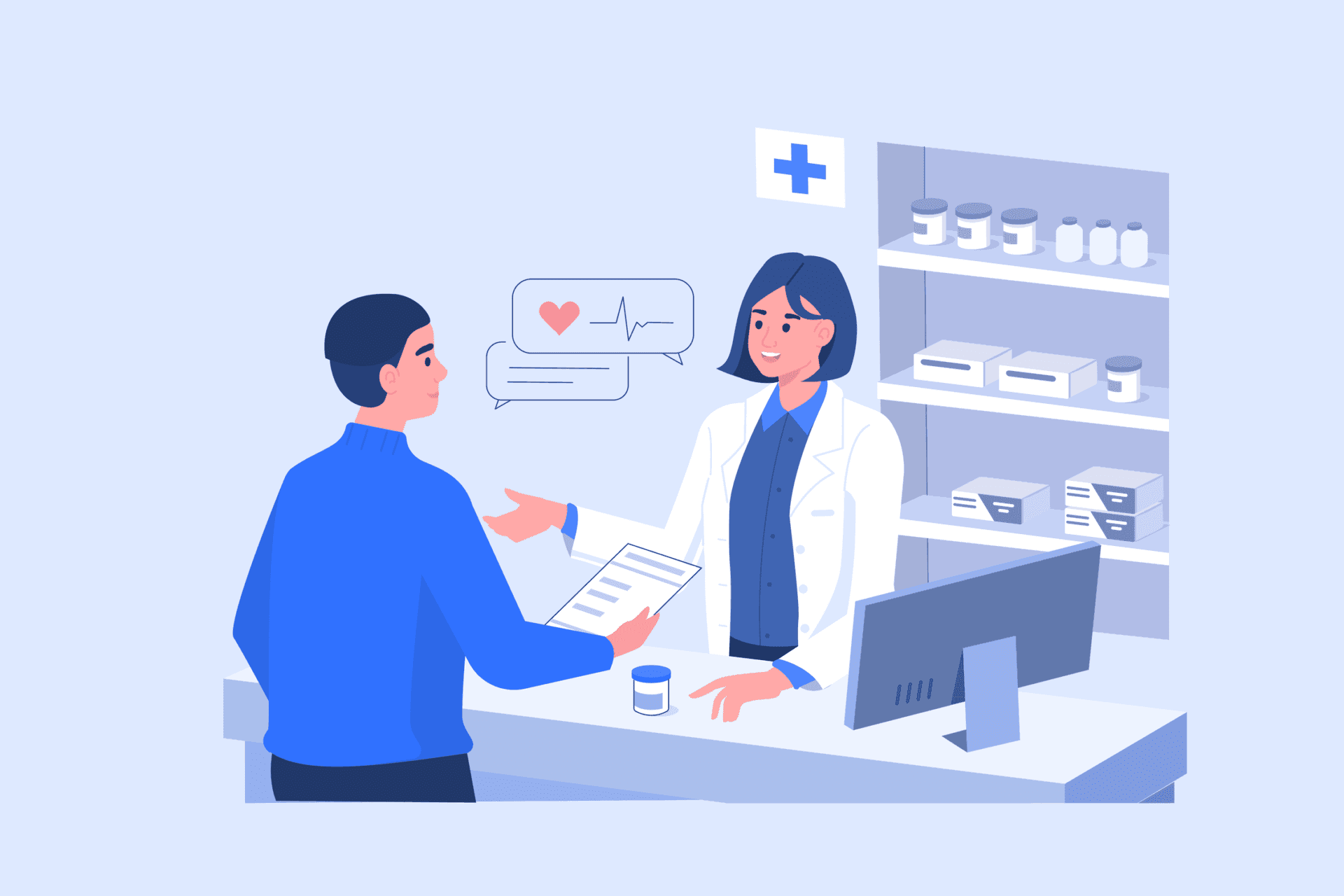- what the concept of service pharmacy means and where it originated
- what pharmacies can do today in terms of public health services and what they will do tomorrow
- the role of pharmacies in primary prevention
- the screening services we can find in pharmacies
The role of the pharmacy in the territory
We trust pharmacists. This is also borne out by a recent Italian pharmacist association survey: in one year, 4 million citizens run some kind of diagnostic measurement (blood pressure, blood sugar, etc.) in a pharmacy and pharmacists spend on consultations an average of 2 hours a day. The Covid health emergency has further enhanced the role of pharmacies in this domain. At a time of uncertainty, when the health services system was struggling, with inaccessible hospitals and general practitioners difficult to contact, pharmacies were essential, acting as active players and making themselves available for molecular swabs and even vaccinations.In fact, the pandemic seems to have accelerated a channel evolution that was already underway: the realisation of a ‘services’ pharmacy‘, a health player within the NHS system performing functions of public interest. This concept was born in Europe in 2009, but until COVID-19 this term, ‘services’, was only understood in an administrative sense. Pharmacies have been used to book examinations and medical appointments, or to dispense medicines and other materials to chronically ill patients on the registers: in short, they are access-points for NHS local services.
The role of Services’ pharmacies could be much wider and relevant than simply a booking spot
Prevention in pharmacies
In reality, the role of Services’ pharmacies can be much wider and more varied. One of the most promising domains for becoming a key healthcare player is Primary Care Services or, more generally, all the services to promote and preserve citizens’ health status. This includes the promotion of positive behaviours and habits, health hygiene, but also some forms of health monitoring and assessment. Today, Primary Care sector is largely under-expressed within NHS systems both at financial level and in terms of capabilities: European Primary Care budget is just only 3%, absorbed by vaccinations and some specific screening campaigns (breast cancer, colorectal cancer, cervical cancer/pap-test). Moreover, Europe will be short of 230,000 doctors over the next 10 years (reduction in the number of medical staff ) as the baby boomers retire. With fewer doctors and an ageing population, it is easy to imagine that the priority of health policies will be increasingly shifted towards the treatment of diseases rather than primary care. This scenario suggests that prevention will never be a full public responsibility and more and more a private concern: single citizens and families will invest and pay for preserving their health, meanwhile the NHS will take care of their illness. In the future, It is very likely some sort of NHS cost-sharing principle to promote individual and private accountability for Primary Care. Insurance agencies have already anticipated this scenario by offering packages with prevention services.
Today, Primary Care sector is largely under-expressed within NHS systems both at financial level and in terms of capabilities
Prevention tools: the screening
The Services’ pharmacy, soon available, will do more: it will be enabled for screening service, understood as a system of questions and data collection that helps to profile a health condition and suggest health behaviours or further medical initiatives. Screening methods can be very diverse, and often come from the world of research and clinical practice.The SoLongevity screening services, for example, are based on internationally validated questionnaires and biomarkers to identify possible cognitive deficits, Long Covid Syndrome, metabolic syndromethe metabolic syndrome is characterized by the simultaneous presence of at least 3 metabolic and haemodynamic alterations that represent a high risk factor for the onset of cardiovascular diseases and tumors., cardiovascular risk, and fatigue condition. In the future, we plan to include movement analysis to assess signs of neurodegenerative risk.In the future, the screening system will be enhanced with a series of very powerful predictive tools, relying on artificial intelligence, capable of projecting a specific individual health risk on a statistical basis.
The Services’-Pharmacy, soon available, will do more: it will be enabled for screening service, understood as a system of questions and data collection that helps to profile a health condition and suggest health behaviours or further medical initiatives
Prevention tools: monitoring
A second dimension of Services- Pharmacy will be health monitoring. People will be able to share information with their pharmacist about their health status, i.e. data on their habits, such as exercise or diet, or other biomarkers. It is similar to what is already being done through apps such as Apple Health or Google Fit. Thanks to the support of intelligent devices and the criss-crossing of the screening service outcomes, the pharmacist will be able to interpret this information continuously, becoming a sort of proactive health coach. A broader perspective than any current app could provide.Longevity Pharmacy Platform is SoLongevity’s platform to support the screening and monitoring services and is empowered with a proprietary app for collecting information through various devices (smartphones, smartwatches, sensors). It is, therefore, a solution to get the Pharmacists into the driving seat for promoting health of their customer base. Over time, it will be enriched with more sophisticated services such as tele-check ups, cardiological measurements, genetic analysis. Respect for privacy rules is obviously a prerequisite for operation: all systems are encrypted, data protected and anonymised through the assignment of codes that only the pharmacist can match to a person’s identity.The role of the pharmacist will evolve: it will be a proactive job






